Today we’re demonstrating how to dye hay for sensory play and crafts. It’s eco-friendly, inexpensive, and reusable. Hay or natural wood excelsior is a filler generally used for decorating baskets or flower arrangements. But, it’s also a wonderful non-food sensory material that sculpts, glues, and absorbs colors quickly and beautifully.
Materials:
- Natural Hay (Natural Excelsior)
- Household Vinegar
- Food Coloring
- Gallon Zip Lock Bags
- Newspaper, Wax Paper (dry time)
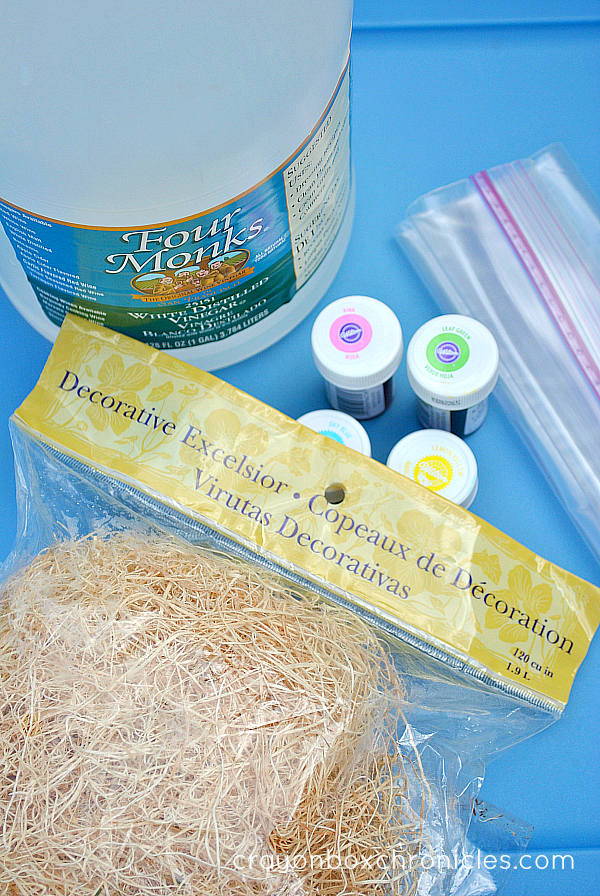 Other common names for the filler are natural wood excelsior or textured hay filler. We chose pastel colors for our upcoming Easter and spring crafts. I bet you could even scent it?!
Other common names for the filler are natural wood excelsior or textured hay filler. We chose pastel colors for our upcoming Easter and spring crafts. I bet you could even scent it?!
How to Dye Natural Hay Wood Excelsior
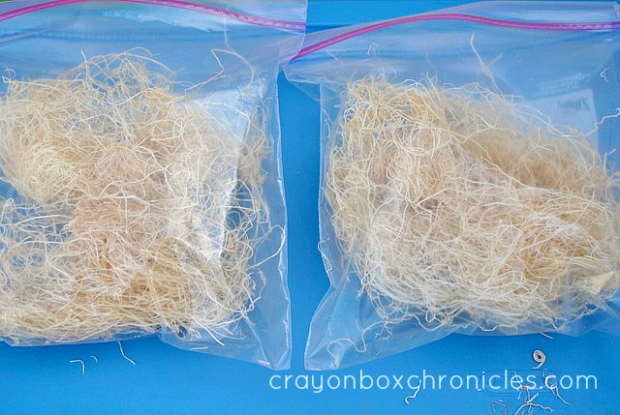 Add hay to a gallon zip-lock bag. We used 2 packages of hay split into 4 zip-lock bags. For best color results, loosely pack the bags and pull apart the hay. A little hay goes a long way.
Add hay to a gallon zip-lock bag. We used 2 packages of hay split into 4 zip-lock bags. For best color results, loosely pack the bags and pull apart the hay. A little hay goes a long way.
Add 5-6 tablespoons of white household vinegar and 3 dollops of food gel icing or 10-20 drops of food coloring to each bag. It absorbs the colors beautifully.
Seal, shake, and flip the bag over a few times. While sealed, pull the hay mixture apart to make sure the liquid color mixture inside the bag covers all the hay.
Let sit 10-20 minutes. Continue shaking the bag to move the liquid color mixture over the hay. I checked on it 1-2 times while it was processing to shake it up.
Remove the hay from zip-locks and place it on newspaper or wax paper to dry, approximately 1 hour. To speed up dry time, hang it outside on a tree branch with a large clip in the sun. I used the clips from C’s art easel. It dried in 15 minutes.
Wash zip-locks and reuse for another color project.
Tips:
- Using gloves, pull apart the filler on newspaper to speed up dry time.
- One hour should be sufficient, but set it outside for even faster dry time.
- The color does not transfer when dried.
- I left a bag for an hour and the colors didn’t chance drastically. Due to the natural wood fibers, the colors absorb quickly.
Vibrant colors in 20 minutes or less! This all natural filler is inexpensive and can be left out or sealed for later use. I’m constantly on the hunt for new, innovative non-food sensory play materials that can be reused and manipulated. LIttle C can hardly wait to play! He’s already inspired a few upcoming ideas.
It’s unruly and oh, oh so fun to sculpt. How tall do you think we can make it? Looking for more creative play recipes?
We used our new hay to sculpt and create a simple sensory bin for play.
Finding unique and inexpensive sensory play materials is no easy task. These creative bloggers have come up with some really colorful and interesting ideas:
Twodaloo created beautiful rainbow barley for play.
Fun-A Day experimented with dyeing corn kernels.
And Next Comes L made fun rainbow rice noodles for light table play.
Fantastic Fun and Learning explored colorful seashell painting.
Are you following our kid crafts and activities on Pinterest?
Follow along with us for more creative fun at: Facebook >> Twitter >> Goggle+ >> Subscribe by Email


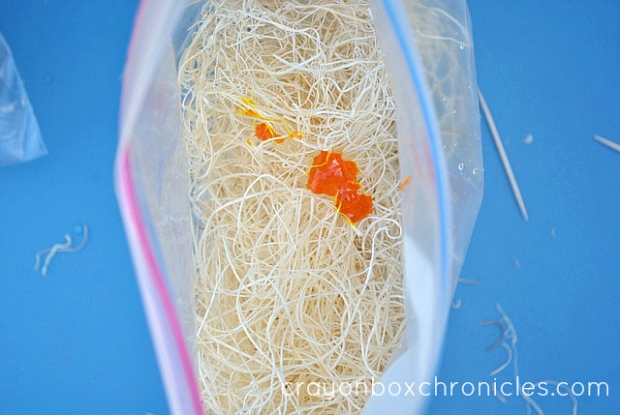

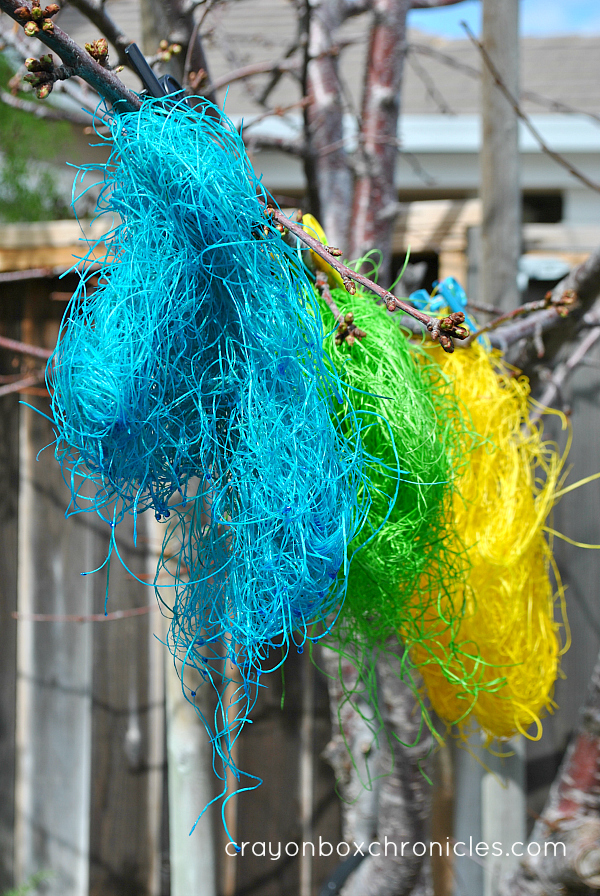
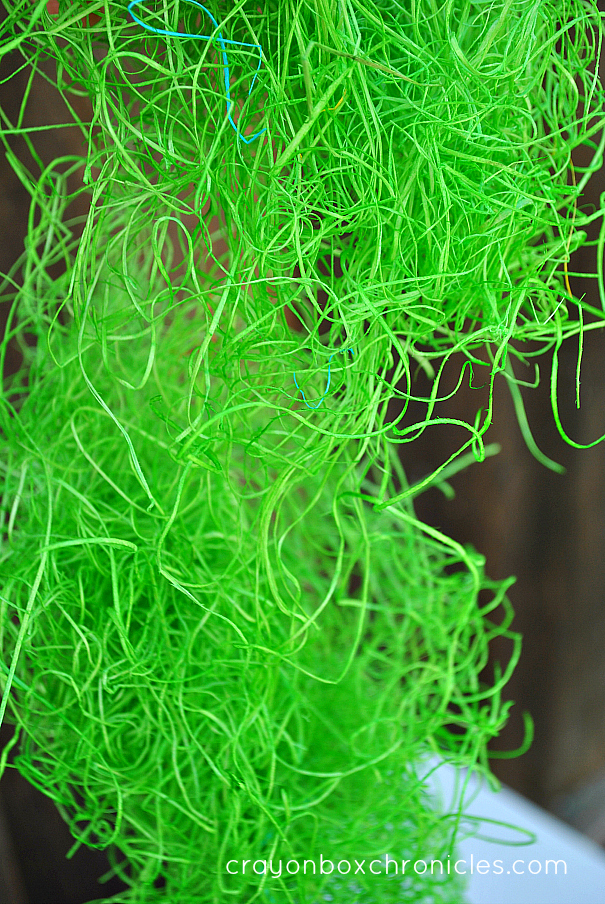
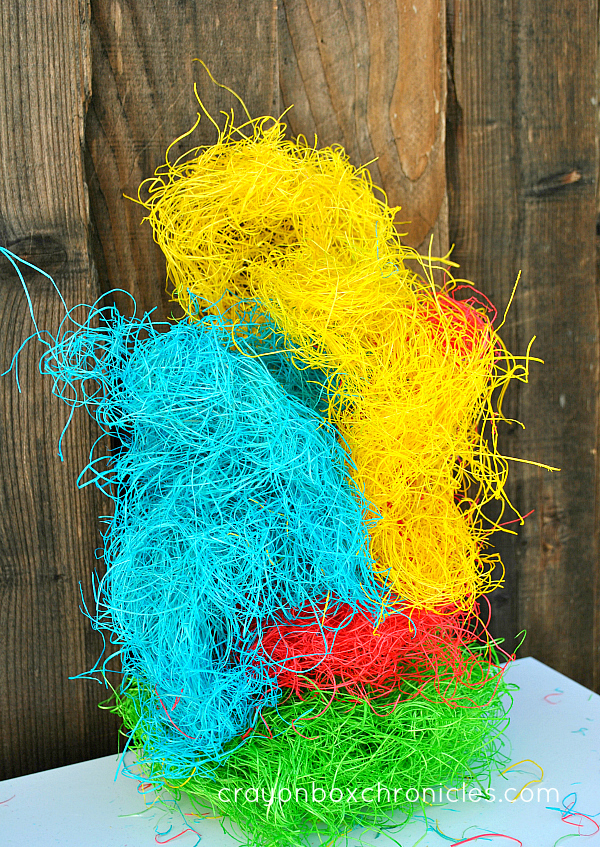





these are super x
LikeLike
thank you Jaime! 🙂
LikeLike
Oh that simple! Now I need to find me some hay! Thanks for sharing on #MotivationalMonday
LikeLike
thank you Pinkoddy! It’s a ton of fun to play with! 🙂
LikeLike